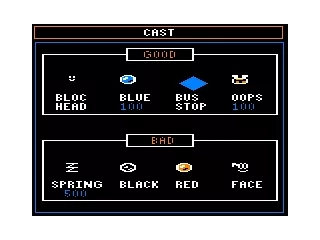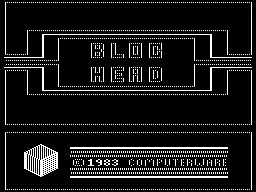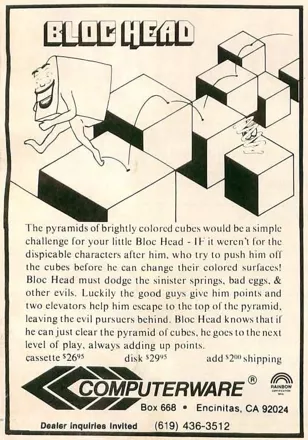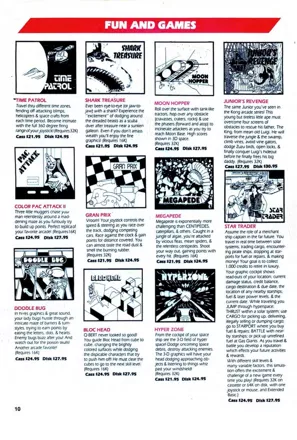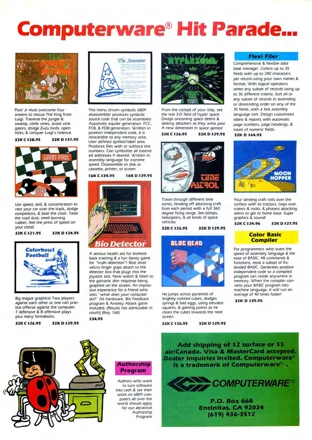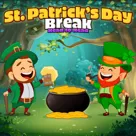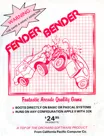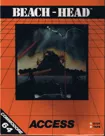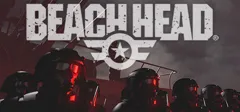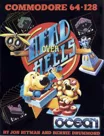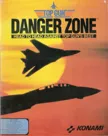Blochead
Description
Blochead is your basic Q*Bert clone, with the notable difference that the "pyramid" is more of a square formation. As with the original, your goal is to jump across all squares on the playfield, thereby changing their colour. Once all squares are coloured, it's on to the next level. While jumping around, you must watch out for the baddies on the screen. The "black" and "red" (their colour changes depending on platform and colour settings) blobs will just jump downwards until they leave the playfield and rematerialise at the top again, while the evil spring can jump in any directions and will hunt poor Blochead all over the place. Luckily, there are two teleport squares outside the normal blocks which you can use to teleport back to your home block.
Groups +
Screenshots
Promos
Reviews
Critics
Average score: 74% (based on 3 ratings)
Players
Average score: 3.7 out of 5 (based on 3 ratings with 1 reviews)
Probably the best Q*Bert for the machine
The Good
This game, written by Computerware for the Co-Co, and released first by Dragon Data and then Microdeal after the demise of Dragon's parent company, is one of the few professionally released Qbert clones for the machine. The second Microdeal release of the game features the traditional colour set selection employed on most Microdeal games, using "black, buff or green" to represent the various usable PMODES. The original Dragon Data release lacked this feature, the game toggling between the colour sets as you progress through. I am not sure which I prefer, as unusually for the Dragon the game looks good in all three modes, regardless of artifact colouring being present on NTSC systems or not. Game play is generally fine, progression is reasonable, and the game is generally quite addictive.
Microdeal also released Tom Mix's Cuber, which was decent enough, but Blochead is probably the superior game, despite having a more challenging control and generally being a less faithful clone in terms of layout. The key difference between the games lies in the fact that the latter used the buff colour set, and randomly chose cube colours whilst having a large number of objects to jump on or avoid,and rather inevitably the bad guys had a nasty habit of not being distinguishable from the background cubes. Blockhead manages to avoid this, partially by making the cubes go invisible at an early stage, probably too early for my money, and partly by not randomly assigning clashing colours of bad guys and cubes. Graphically the game works well in colour at the slightly lower resolution, and someone somewhere must have thought the game looked good, as it made its way onto the Dragon By Tano box cover to highlight the machine's games playing capabilities, a notable upgrade on the packaging of the 32 in the UK, which featured a less than graphically impressive Chess program. Given the challenges of making an isometric game on a relatively limited colour palette, Blockhead scores highly for the way it approaches the task, making good use of the machine's capabilities. Sound was reasonable for the era, and the game retains Qberts' family friendly appeal, although it is too challenging for most little ones even on the easy level.
The Bad
Most of the issues with the game stem from the fact that it is a clone of an isomeric game, and like most isometric games the control is initially very difficult. That is certainly true here. You can literally lose a life with the joystick slightly off centre within a second of the game starting, and the game plays quite poorly with switch joysticks. Fortunately, the standard Dragon and Co-Co joysticks that most people used were potentiometer based, and these tended to lack the rigid self-centering of most of the joysticks of the era such as the Quickshots. These potentiometer joysticks made movement much easier than it otherwise would be and allowing the game to be attempted with minimal movement of thumbs and fingers, rather than the exhausting RSI inducing wrist movements required when attempting the game with a conventional switch joystick.
The Bottom Line
A fine clone of QBert, well realized and a little different at times, and generally very difficult. You won't get a better clone of the game on either the Dragon or Co-Co.
Dragon 32/64 · by drmarkb (105) · 2020
Analytics
Upgrade to MobyPro to view research rankings!
Identifiers +
Contribute
Are you familiar with this game? Help document and preserve this entry in video game history! If your contribution is approved, you will earn points and be credited as a contributor.
Contributors to this Entry
Game added by Игги Друге.
Additional contributors: hoeksmas.
Game added February 6, 2007. Last modified February 22, 2023.


